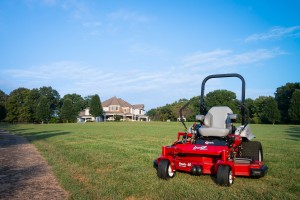By the time autumn rolls around, many homeowners are tired of lawn maintenance. After all, you’ve spent the entire summer watering, trimming, mowing, and taking steps to ensure your lush, green grass stays that way. And then the leaves start to fall.
Although you might be tempted to let the fall leaves stay on the grass for the winter, it’s rarely a good idea to let the leaves just lay there, and not because your neighbors might complain.
Leaf Lawn Damage
Fallen leaves have nutrients th at are great for enriching the soil. When they biodegrade naturally, they leave behind carbon, nitrogen, and other organic matter essential to plant growth. Worms love this stuff, and they pull it into the soil and leave behind worm castings that do even more to improve your lawn.
But this isn’t what happens when leaves are just covering the lawn. It takes leaves a long time to break all the way down, and when they fully cover the lawn, they limit the amount of sunlight and oxygen getting to the grass—something you really want, especially if you’ve recently planted grass seed. Large clumps of leaves can also create soggy piles that turn turf into mud, which is also less-than-ideal when you’re building up a lawn.
Many, if not most, homeowners rake the leaves into piles and haul them away. However, it’s a much better idea (and easier than raking!) to mulch the leaves. This way, your lawn retains the nutrients and stays neat and tidy.
Why Mulch?
Mulching leaves (chopping them into smaller, more easily broken down pieces) is a great way to keep the nutrients without sacrificing aesthetics. By breaking the leaves into pieces so small they can’t be seen by the naked eye, you can keep everything looking neat. At the same time, these smaller pieces will break down faster, meaning you’ll get more nutrients at a faster rate—something that’s ideal when you’re prepping your lawn for winter.

The decreased noise and increased clipping control of a rear-discharge mower are ideal for maintaining residential properties.
This process is also much easier than most people realize. Mow over the leaves and discharge the clippings over the lawn. Areas of especially heavy mulch deposit might require you to spread the debris by hand, but most of the work will be done by your lawn equipment. You can invest in micro mulching kits for your mower, but if you have an Exmark mower with an UltraCut Rear Discharge cutting system, you shouldn’t need one. The excellent clipping control mean you can decide where the mulch will be deposited.
Don’t Let Your Leaves Lie All Winter
Leaves left on the lawn during fall will soon become frozen clumps during the winter, and be soggy piles in the spring. Get ahead of your maintenance game this year by mulching your leaves. Your grass will thank you—and so will your neighbors!
SHARE





